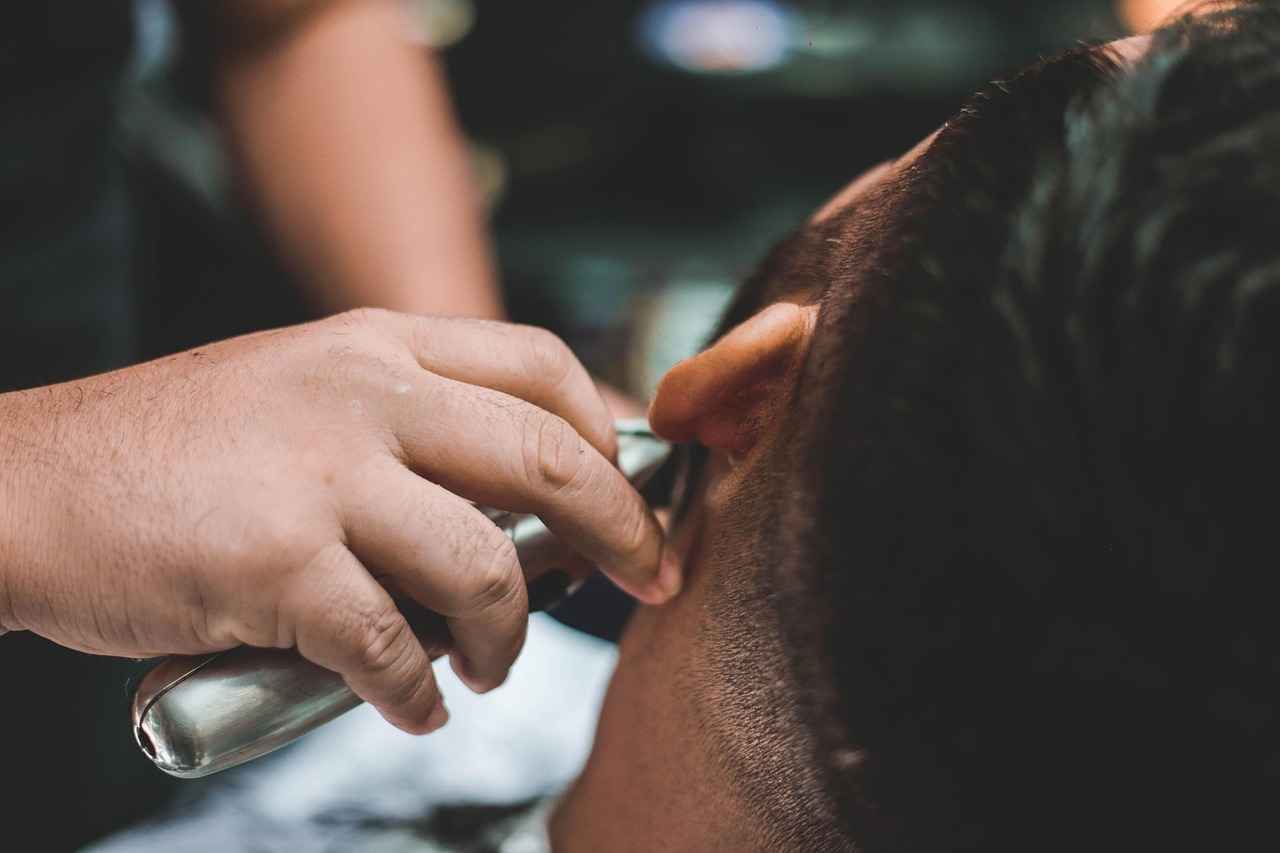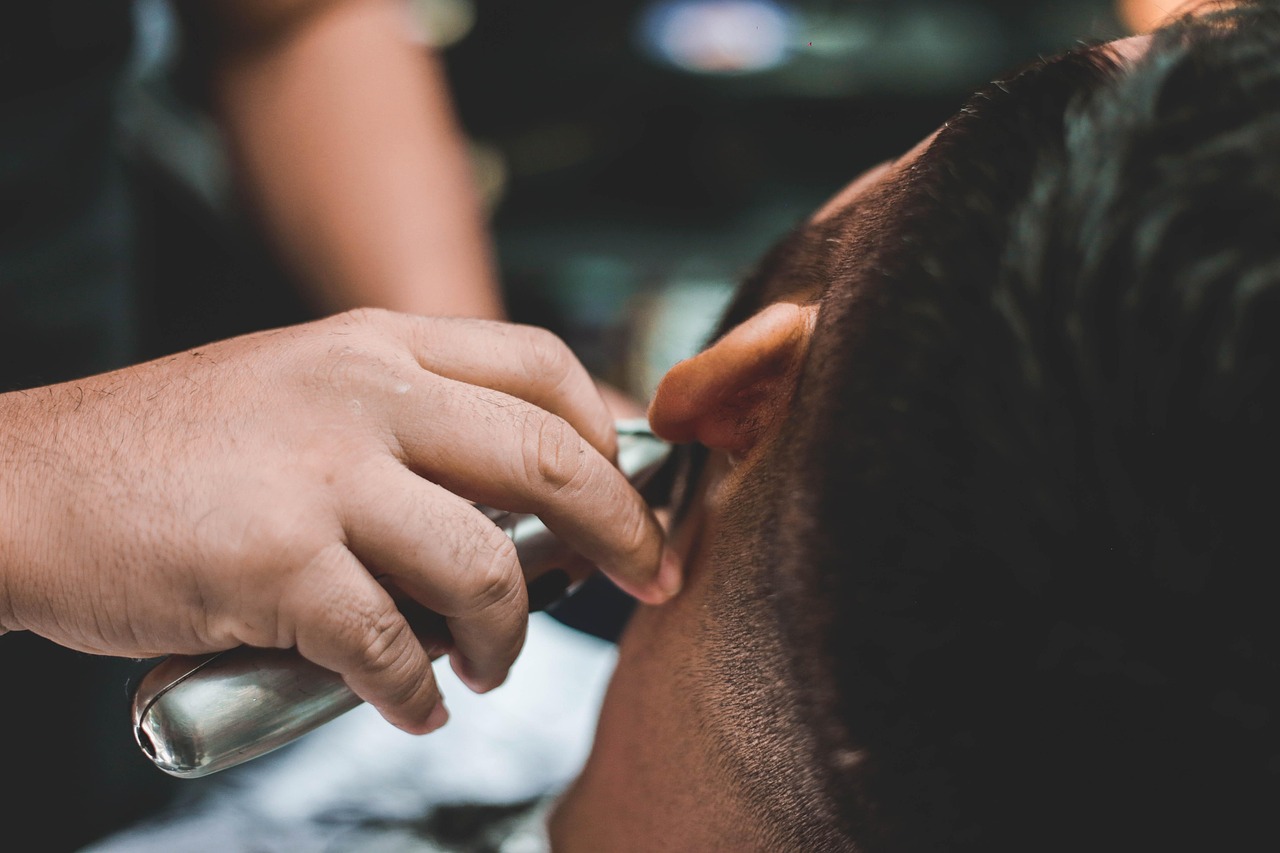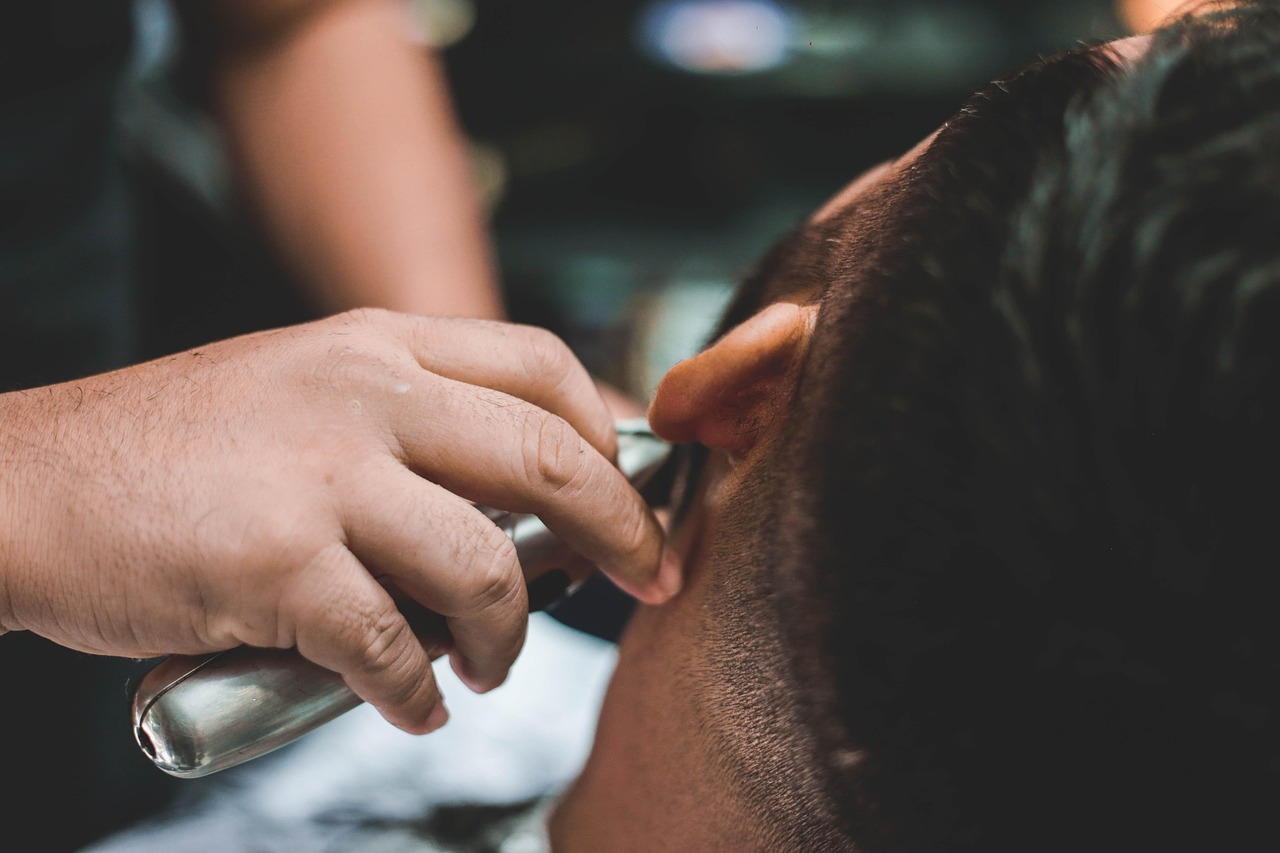This article delves into the distinctions between PRP therapy and hair transplant clinics, offering insights into their effectiveness, procedures, costs, and potential outcomes. Our goal is to equip you with the necessary information to make an informed decision regarding your hair restoration options.
Understanding PRP Therapy
PRP (Platelet-Rich Plasma) therapy is a non-invasive treatment that harnesses the healing properties of your own blood to promote hair growth. The process begins with a simple blood draw, followed by the separation of plasma rich in platelets, which is then injected into the scalp. This therapy is known for its minimal downtime and natural results, making it an appealing option for those looking to enhance their hair without surgical intervention.
What is Hair Transplant Surgery?
Hair transplant surgery is a more invasive procedure that involves relocating hair follicles from a donor site to areas experiencing thinning or balding. This method is often considered when PRP therapy does not yield the desired results. There are two primary techniques for hair transplantation: Follicular Unit Transplantation (FUT) and Follicular Unit Extraction (FUE).
- FUT: This method involves removing a strip of scalp from the donor area, which is then dissected into individual grafts.
- FUE: This technique extracts individual hair follicles directly from the scalp, resulting in less visible scarring.
Effectiveness of PRP Therapy
The effectiveness of PRP therapy can vary among individuals, influenced by factors such as age and the extent of hair loss. Studies have shown promising results, with many patients reporting significant improvements in hair density and thickness.
Comparing Costs: PRP vs. Hair Transplants
Cost is a crucial factor in the decision-making process. Generally, PRP therapy is less expensive than hair transplant surgery. However, it is essential to consider long-term costs, as multiple sessions of PRP may be required to maintain results.
Side Effects and Risks
Both PRP therapy and hair transplant surgeries carry potential risks and side effects. Common side effects of PRP may include mild swelling and discomfort at the injection site, while hair transplants can lead to scarring and infection if not performed under sterile conditions.
Patient Testimonials and Success Stories
Hearing from patients who have undergone these treatments can provide valuable insights. Many individuals report satisfaction with their results, particularly with PRP therapy’s non-invasive nature and quick recovery time.
Choosing the Right Option for You
The choice between PRP therapy and hair transplant surgery ultimately depends on your specific needs and preferences. Factors such as the severity of hair loss, budget, and desired results should guide your decision.
Conclusion: Making an Informed Decision
In conclusion, both PRP therapy and hair transplants offer unique benefits and considerations. Assessing your individual circumstances and consulting with a qualified professional will help you make an informed decision about your hair restoration journey.

Understanding PRP Therapy
PRP (Platelet-Rich Plasma) therapy is a non-surgical treatment that has gained significant attention for its potential to stimulate hair growth. This innovative procedure harnesses the healing properties of the patient’s own blood, making it a natural and safe option for those experiencing hair loss.
The procedure begins with a simple blood draw, similar to a routine blood test. The drawn blood is then placed in a centrifuge, which spins at high speeds to separate the components of the blood. This process concentrates the platelets, which are rich in growth factors. Once the PRP is prepared, it is injected into the scalp in areas where hair thinning is evident. The growth factors in PRP are believed to promote hair follicle activity and encourage new hair growth.
Benefits of PRP Therapy
- Natural Treatment: Since PRP uses the patient’s own blood, there is minimal risk of allergic reactions or complications.
- Non-Invasive: Unlike hair transplant surgeries, PRP is a non-invasive procedure with no need for anesthesia.
- Quick Recovery: Patients can typically return to their normal activities immediately after the treatment.
- Minimal Side Effects: Common side effects are mild and may include temporary swelling or discomfort at the injection site.
Expected Results
While individual results may vary, many patients begin to notice improvements in hair density and thickness within a few months of treatment. It is essential to have realistic expectations, as PRP therapy is not a magic solution but rather a supportive treatment that can enhance hair growth.
In conclusion, PRP therapy offers a promising option for individuals seeking to address hair loss without the need for surgery. With its natural approach and minimal downtime, it has become a popular choice among those looking to rejuvenate their hair.

What is Hair Transplant Surgery?
Hair transplant surgery is a cosmetic procedure designed to restore hair to areas of the scalp that are thinning or bald. This innovative technique involves relocating hair follicles from a donor site—typically the back or sides of the head—to areas where hair is sparse. The primary aim is to create a natural-looking hairline and enhance overall hair density.
There are several types of hair transplant techniques, each with its own unique process and effectiveness. The two most commonly used methods are:
- Follicular Unit Transplantation (FUT): This technique involves removing a strip of scalp from the donor area, which is then dissected into individual grafts. FUT is known for its ability to harvest a large number of hair follicles in one session.
- Follicular Unit Extraction (FUE): In contrast to FUT, FUE involves extracting individual hair follicles directly from the scalp. This minimally invasive method leaves tiny scars that are less noticeable and allows for quicker recovery.
Both techniques have been shown to be effective in restoring hair, but the choice between them often depends on individual circumstances, including hair loss severity, desired outcomes, and personal preferences.
Recovery time varies between the two methods, with FUE typically offering a faster return to normal activities due to its less invasive nature. However, the ultimate effectiveness of hair transplant surgery largely depends on factors such as the surgeon’s skill, the quality of the donor hair, and the patient’s overall health.
In conclusion, hair transplant surgery is a viable option for individuals seeking to address hair loss. Understanding the different techniques and their effectiveness can help potential candidates make informed decisions about their hair restoration journey.
FUT vs. FUE Techniques
The world of hair restoration offers two primary techniques: Follicular Unit Transplantation (FUT) and Follicular Unit Extraction (FUE). Each method has its own unique processes, advantages, and potential outcomes. Understanding these differences is crucial for anyone considering hair transplant surgery.
| Aspect | FUT | FUE |
|---|---|---|
| Procedure | Involves removing a strip of scalp from the donor area. | Involves extracting individual hair follicles directly from the scalp. |
| Scarring | Linear scar at the donor site. | Minimal scarring, as there are no large incisions. |
| Recovery Time | Longer recovery period, typically 10-14 days. | Shorter recovery, usually around 7-10 days. |
| Hair Density | Can achieve higher hair density in one session. | May require multiple sessions for similar density. |
| Cost | Generally less expensive per graft. | Typically more expensive due to the technique. |
Recovery Time: FUT often requires a longer recovery time due to the nature of the procedure, which involves a larger incision. Patients may experience more discomfort and swelling compared to FUE, which is less invasive and allows for a quicker return to daily activities.
Results: Both techniques can yield natural-looking results, but the choice between FUT and FUE often depends on individual preferences regarding scarring, recovery time, and cost. Many patients prefer FUE for its minimal scarring and quicker recovery, while others may opt for FUT for its potential for greater hair density in a single session.
In conclusion, understanding the differences between FUT and FUE is essential for making an informed decision about hair restoration. Consulting with a qualified specialist can provide personalized insights and recommendations based on individual needs and circumstances.
FUT: The Strip Method
Follicular Unit Transplantation (FUT) is a well-established hair restoration technique that involves the removal of a strip of scalp from the donor area, typically at the back of the head. This strip is then meticulously dissected into individual follicular units, which are subsequently transplanted into the thinning or balding areas of the scalp. While this method has been a popular choice for many seeking hair restoration, it comes with its own set of advantages and disadvantages.
| Advantages | Disadvantages |
|---|---|
|
|
Ultimately, the decision to choose FUT over other methods, such as Follicular Unit Extraction (FUE), should be based on individual needs, hair loss severity, and personal preferences. Consulting with a qualified hair restoration specialist can provide valuable insights tailored to your specific circumstances.
FUE: The Modern Approach
Follicular Unit Extraction (FUE) is a cutting-edge technique in the field of hair restoration that has gained significant popularity in recent years. Unlike traditional methods, FUE extracts individual hair follicles directly from the scalp, offering a less invasive option for those seeking to restore their hair. This innovative approach presents numerous benefits that make it an appealing choice for many individuals.
One of the most notable advantages of FUE is its minimal scarring. Since the procedure involves extracting single follicles, the resulting scars are tiny and often undetectable, allowing patients to wear their hair short without fear of visible marks. In contrast, traditional methods like Follicular Unit Transplantation (FUT) can leave a linear scar that may be more noticeable.
Additionally, the recovery time associated with FUE is significantly shorter than that of FUT. Most patients can return to their daily activities within a few days, as the procedure is less traumatic to the scalp. This quick recovery period is particularly beneficial for individuals with busy lifestyles who cannot afford extended downtime.
Moreover, FUE allows for a more natural-looking result. The precision of extracting individual follicles enables surgeons to place them in a way that mimics natural hair growth patterns, leading to a fuller and more aesthetically pleasing appearance. Patients often report higher satisfaction rates with FUE compared to other techniques.
However, it is essential to note that while FUE offers many benefits, it may not be suitable for everyone. Factors such as hair density, the extent of hair loss, and individual scalp characteristics can influence the effectiveness of the procedure. Therefore, a thorough consultation with a qualified specialist is crucial to determine if FUE is the right option for you.
In conclusion, FUE represents a modern approach to hair restoration that prioritizes patient comfort, minimal scarring, and natural results. As technology continues to advance, this technique is likely to remain at the forefront of hair transplant options, providing hope for those seeking to regain their confidence through hair restoration.
Effectiveness of PRP Therapy
Platelet-Rich Plasma (PRP) therapy has emerged as a popular non-surgical option for individuals experiencing hair loss. However, its effectiveness can vary significantly based on several individual factors, including age, the extent of hair loss, and overall health. This section delves into various studies and expert opinions regarding the success rates of PRP therapy in promoting hair growth and preventing hair loss.
Recent clinical studies have shown promising results, with many patients reporting noticeable improvements in hair density and thickness after undergoing PRP therapy. According to a study published in the Journal of Cosmetic Dermatology, approximately 70% of participants experienced positive outcomes, with hair regrowth observed after a series of sessions. This indicates that PRP therapy can be a viable option for many seeking to combat hair thinning.
However, it is essential to recognize that not everyone responds to PRP therapy in the same way. Factors such as genetics, the cause of hair loss, and adherence to treatment protocols can influence results. For instance, individuals with androgenetic alopecia may see different outcomes compared to those with hair loss due to stress or nutritional deficiencies.
- Expert Opinions: Dermatologists emphasize the importance of a comprehensive evaluation before starting PRP therapy. They often recommend combining PRP with other treatments, such as minoxidil or finasteride, for enhanced results.
- Success Rates: While many patients report satisfaction, some studies indicate that the effectiveness of PRP therapy may diminish over time, necessitating ongoing treatments to maintain results.
In conclusion, while PRP therapy shows potential in promoting hair growth and preventing further hair loss, individual results can vary widely. Consulting with a qualified specialist is crucial to determine the most appropriate treatment plan tailored to one’s specific needs.

Comparing Costs: PRP vs. Hair Transplants
When considering hair restoration options, cost is often a pivotal factor influencing the decision between PRP therapy and hair transplant surgeries. Understanding the financial implications of each treatment can help patients make informed choices tailored to their needs.
Average Costs of PRP Therapy
PRP therapy typically ranges from $1,500 to $3,500 for a series of treatments. Each session can cost between $300 to $1,500, depending on the clinic and location. It’s essential to note that multiple sessions are usually required to achieve optimal results, which can add to the overall expense.
Average Costs of Hair Transplants
In contrast, hair transplant surgeries can be significantly more expensive, with costs averaging between $4,000 and $15,000. The price largely depends on the method used (FUT vs. FUE), the number of grafts required, and the surgeon’s expertise. On average, patients can expect to pay around $3 to $10 per graft.
| Treatment Type | Cost Range | Sessions Required |
|---|---|---|
| PRP Therapy | $1,500 – $3,500 | 3-6 |
| Hair Transplant | $4,000 – $15,000 | 1 (Single Procedure) |
Long-Term Financial Considerations
While PRP therapy may appear less expensive initially, it requires ongoing sessions to maintain results, which can accumulate over time. Hair transplants, on the other hand, are typically a one-time investment, but patients should consider potential follow-up treatments or maintenance procedures.
Ultimately, the choice between PRP therapy and hair transplants should not solely hinge on cost. It is crucial to weigh the long-term benefits and potential outcomes of each option. Consulting with a qualified specialist can provide personalized insights based on individual hair loss conditions and budget.
Insurance Coverage and Financing Options
Understanding insurance coverage for hair restoration treatments can be quite complex. Many individuals seeking solutions for hair loss often wonder if their insurance will cover PRP therapy or hair transplant surgeries. This section aims to clarify what to expect regarding insurance policies and available financing options for both treatments.
Generally, most insurance plans consider hair restoration procedures as cosmetic treatments. This means that they may not provide coverage unless there is a medical necessity, such as hair loss due to a medical condition. It is essential to check with your insurance provider to understand the specific coverage details and any required documentation.
For those whose insurance does not cover these treatments, there are various financing options available. Many clinics offer payment plans that allow patients to spread the cost of treatment over time. Additionally, some clinics partner with third-party financing companies that specialize in medical loans, making it easier for patients to afford these procedures.
| Financing Options | Description |
|---|---|
| Payment Plans | Flexible payment options offered by clinics, allowing monthly installments. |
| Medical Loans | Loans specifically designed for medical procedures, often with low-interest rates. |
| Credit Cards | Using credit cards for immediate payment, but watch for high-interest rates. |
When considering hair restoration, it is crucial to evaluate all financial options thoroughly. This not only aids in managing costs but also ensures that you choose a treatment that aligns with your budget and financial situation. Always consult with your healthcare provider or financial advisor to make the most informed decision regarding your hair restoration journey.
Long-Term Investment: Maintenance Costs
When considering hair restoration options, it is crucial to understand that both PRP therapy (Platelet-Rich Plasma therapy) and hair transplant procedures necessitate ongoing care to sustain their results. This section delves into the long-term maintenance costs associated with each treatment, allowing potential patients to make informed financial decisions.
PRP Therapy Maintenance Costs
- Frequency of Treatments: Typically, patients require multiple sessions of PRP therapy to achieve optimal results. Initial treatments may be scheduled every 4-6 weeks, followed by maintenance sessions every 4-6 months. This can accumulate significant costs over time.
- Average Cost Per Session: The average cost of a single PRP session can range from $1,500 to $3,500, depending on the clinic and geographic location. Over time, this can add up to a substantial investment.
- Additional Products: Patients may also need to invest in supplementary hair care products or medications to enhance the results of PRP therapy, further increasing overall expenses.
Hair Transplant Maintenance Costs
- Post-Procedure Care: After a hair transplant, patients must follow specific aftercare instructions to ensure successful healing and hair growth. This may involve follow-up visits, which can incur additional costs.
- Long-Term Care: While hair transplants are considered a permanent solution, some patients may still require ongoing treatments, such as minoxidil or finasteride, to maintain hair density and prevent further hair loss.
- Average Cost of Follow-Up Treatments: These medications can cost approximately $30 to $100 per month, depending on the prescription and brand.
In conclusion, both PRP therapy and hair transplant procedures involve long-term financial commitments. Understanding these maintenance costs is essential for individuals considering these options, as it allows for a comprehensive evaluation of their investment in hair restoration. By factoring in both initial and ongoing expenses, patients can better prepare for their journey toward achieving their desired hair restoration outcomes.

Side Effects and Risks
Every medical procedure, whether surgical or non-surgical, carries inherent risks. It is crucial to understand the potential side effects and complications associated with both PRP therapy and hair transplant surgeries. This section aims to provide a comprehensive overview of these risks, allowing patients to make informed decisions regarding their hair restoration options.
PRP Therapy Risks
- Injection Site Reactions: Patients may experience pain, swelling, or bruising at the injection sites. These symptoms are generally mild and resolve quickly.
- Infection: Although rare, there is a risk of infection at the injection sites, which can lead to more serious complications.
- Allergic Reactions: Some individuals may have allergic reactions to the anesthetic used during the procedure.
- Unsatisfactory Results: PRP therapy’s effectiveness can vary, and some patients may not achieve the desired hair growth.
Hair Transplant Surgery Risks
- Scarring: Both FUT and FUE techniques can leave scars. FUT typically results in a linear scar, while FUE may cause small, dot-like scars.
- Infection: As with any surgical procedure, there is a risk of infection, which can complicate recovery and affect results.
- Bleeding: Some bleeding is normal, but excessive bleeding can occur in rare cases.
- Shock Loss: Temporary hair loss in the transplanted area can occur, known as shock loss, which may resolve over time.
Safety Considerations
To minimize risks, it is essential to choose a qualified and experienced practitioner for both PRP therapy and hair transplant procedures. Patients should have thorough consultations to discuss their medical history, expectations, and any potential complications.
In conclusion, understanding the side effects and risks associated with PRP therapy and hair transplants is vital for making an informed choice. By being aware of these factors, patients can better prepare for their hair restoration journey and set realistic expectations for their outcomes.

Patient Testimonials and Success Stories
Hearing from those who have undergone treatments such as PRP therapy and hair transplants can provide invaluable insights into the effectiveness and experiences associated with these procedures. Real-life testimonials often highlight the emotional and physical transformations that patients endure, offering a glimpse into the potential outcomes of these treatments.
Many patients report significant improvements in hair density and overall appearance after undergoing PRP therapy. For instance, one patient shared, “After just a few sessions of PRP, I noticed my hair becoming thicker and healthier. It was a relief to see new growth where I once felt hopeless.” Such stories illustrate the positive impact PRP therapy can have on self-esteem and confidence.
On the other hand, individuals who have opted for hair transplant surgeries often express satisfaction with their decision. A patient who underwent the FUE technique stated, “The results were beyond my expectations. I can finally style my hair the way I want without worrying about bald spots.” This feedback emphasizes the effectiveness of modern hair restoration techniques in achieving natural-looking results.
Another common theme among testimonials is the importance of choosing the right clinic. Many patients recommend thorough research and consultations before making a decision. One individual noted, “I spent weeks researching clinics and reading reviews. It made all the difference in my experience.” This highlights the need for prospective patients to consider factors such as clinic reputation, surgeon expertise, and patient care.
In summary, the shared experiences of those who have undergone PRP therapy and hair transplants reveal a spectrum of positive outcomes and emotional journeys. These testimonials not only provide hope but also serve as a guide for others considering similar paths in their quest for hair restoration.

Choosing the Right Option for You
When it comes to addressing hair loss, making the right choice between PRP therapy and hair transplants can be a daunting task. Each option has its unique advantages and drawbacks, and understanding these can significantly impact your decision-making process.
To begin, consider the severity of your hair loss. Individuals with mild to moderate hair thinning may find that PRP therapy is a suitable option, as it aims to stimulate hair growth using the body’s own natural healing mechanisms. This non-invasive procedure typically requires multiple sessions and is less aggressive than surgical alternatives.
On the other hand, if you are experiencing advanced hair loss or baldness, a hair transplant may be more effective. This surgical procedure involves relocating hair follicles from a donor area to balding spots, providing a more permanent solution. It’s essential to evaluate your specific condition and consult with a specialist to determine the best course of action.
Personal preferences also play a significant role in your decision. Some individuals may prefer the non-surgical approach of PRP therapy due to its lower risk of complications and shorter recovery time. Others might opt for the more definitive results offered by hair transplants, despite the longer recovery period and potential discomfort.
Additionally, consider the cost implications of each treatment. PRP therapy may be more affordable in the short term, but hair transplants often provide lasting results that can justify the higher initial investment. Be sure to factor in the long-term maintenance costs associated with both options.
In conclusion, selecting between PRP therapy and hair transplants requires careful consideration of your hair loss severity, personal preferences, and financial aspects. Consulting with a qualified professional can provide personalized insights and help you make an informed decision that aligns with your needs.

Conclusion: Making an Informed Decision
In the realm of hair restoration, both PRP therapy and hair transplants stand out as viable options, each with its own set of advantages and challenges. As you navigate your hair restoration journey, it is crucial to consider several key factors before making a decision.
Firstly, PRP therapy is a non-invasive treatment that utilizes your own blood’s growth factors to stimulate hair follicles. This method is generally less expensive and requires minimal downtime, making it an attractive choice for many individuals. However, results can vary significantly based on individual responses, and multiple sessions may be necessary to achieve desired outcomes.
On the other hand, hair transplants involve a surgical procedure that relocates hair follicles from a donor site to balding areas. Techniques such as FUT (Follicular Unit Transplantation) and FUE (Follicular Unit Extraction) offer different benefits, with FUE being less invasive and associated with quicker recovery times. While this option may yield more permanent results, it typically comes with a higher price tag and a longer recovery period.
| Factor | PRP Therapy | Hair Transplant |
|---|---|---|
| Invasiveness | Non-invasive | Surgical |
| Cost | Generally lower | Higher |
| Recovery Time | Minimal | Longer |
| Results | Variable | More permanent |
Ultimately, the choice between PRP therapy and hair transplants should be guided by your individual needs, budget, and the severity of your hair loss. Consulting with a qualified specialist can provide personalized insights, ensuring you make a choice that aligns with your hair restoration goals.
In summary, both options have unique benefits. By weighing the pros and cons and considering your personal circumstances, you can make a well-informed decision that suits your hair restoration journey.
Frequently Asked Questions
- What is PRP therapy?
PRP therapy, or Platelet-Rich Plasma therapy, is a non-surgical treatment that uses your own blood to stimulate hair growth. It involves drawing blood, processing it to concentrate the platelets, and injecting it into the scalp.
- How does a hair transplant work?
A hair transplant involves relocating hair follicles from a donor site to areas where hair is thinning or balding. The two primary techniques are Follicular Unit Transplantation (FUT) and Follicular Unit Extraction (FUE), each with its own method of extraction and implantation.
- What are the main differences between FUT and FUE?
FUT, often called the strip method, involves removing a strip of scalp, while FUE extracts individual follicles directly. FUT may leave a linear scar, whereas FUE results in minimal scarring and often has a quicker recovery time.
- Are there any side effects associated with these treatments?
Yes, both PRP therapy and hair transplants can have side effects. PRP may cause mild pain or swelling at the injection site, while hair transplants can lead to scarring, infection, or temporary hair loss in the transplanted area.
- How much do PRP therapy and hair transplants cost?
The costs can vary significantly. PRP therapy may range from $1,500 to $3,500 per session, while hair transplants can cost anywhere from $4,000 to $15,000 depending on the method and the number of grafts required.
- Will insurance cover these procedures?
Most insurance plans do not cover hair restoration treatments, as they are often considered cosmetic procedures. However, it’s best to check with your insurance provider for specific details and potential financing options.












